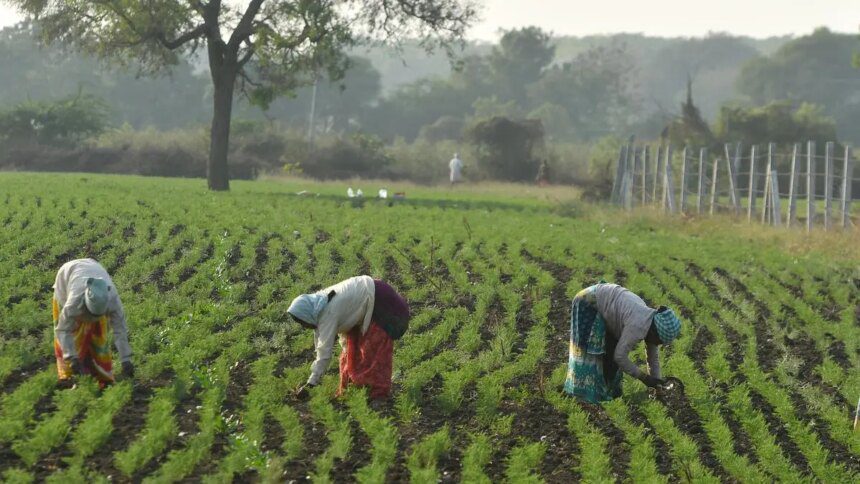India’s pulses import value has more than halved in the first half of the current financial year due to a decline in global prices and reduced import volumes. According to quick estimates released by the Commerce Ministry, the import value of pulses for the period from April to September 2025 was $1.03 billion, down from $2.18 billion during the same period last year. In rupee terms, the imports fell by 51 percent, dropping to ₹8,908 crore from ₹18,282 crore in the previous year.
In the financial year 2024-25, India imported a record $5.47 billion worth of pulses, with imports reaching a high of 73 lakh tonnes. However, import volumes for the current financial year have been sluggish. Data from IGrain India indicate that pulses import volumes between April and July 2025 totaled 9.97 lakh tonnes, a decline from 18.02 lakh tonnes during the same period last year. Notably, except for a slight increase in tur imports, all other pulse varieties saw reduced purchases, particularly yellow peas and lentils.
Specifically, yellow pea imports from April to July 2025 were at 2.73 lakh tonnes, down from 9.32 lakh tonnes in the same timeframe last year. Similarly, imports of desi chana decreased to 0.27 lakh tonnes from 0.58 lakh tonnes, urad to 2.30 lakh tonnes from 2.56 lakh tonnes, and lentils to 1.76 lakh tonnes from 2.81 lakh tonnes. Conversely, tur imports showed a marginal increase to 2.91 lakh tonnes, compared to 2.75 lakh tonnes in the previous year.
Duty-free imports of pulses such as tur, urad, and yellow peas are allowed until March 31, 2026, while chana and masur are subject to a 10 percent import duty.
With an influx of low-priced imports impacting the domestic market, there have been calls from the trade sector for restrictions on yellow pea imports. Prices for nearly all pulses are currently trending lower compared to last year, owing to ample supply. The Commission for Agricultural Costs and Prices (CACP) has recommended a complete ban on yellow pea imports and suggested increasing tariffs on gram (chana) and lentils to curtail cheap imports. The CACP has also advocated for the development of high-yielding, climate-resilient varieties and ensuring quality seed availability to achieve self-sufficiency in pulses.
The Government has initiated a mission aimed at achieving self-sufficiency in pulses, with a budget allocation of ₹11,440 crore to increase domestic pulses production to 350 lakh tonnes and expand cultivation to 310 lakh hectares by 2030-31. The mission also includes a commitment to ensure procurement of pulses like tur, urad, and masoor at Minimum Support Price (MSP) for a period of four years.
In Kharif 2025, total area under pulses increased slightly to 120.41 lakh hectares from 119.04 lakh hectares the previous year. Despite the rise in acreage, production is expected to decline due to excessive and irregular rainfall affecting crop output in key states such as Karnataka, Maharashtra, Madhya Pradesh, and Rajasthan. The overall monsoon rainfall was above normal, with the country receiving 108 percent of the long-period average.
Published on October 21, 2025.










